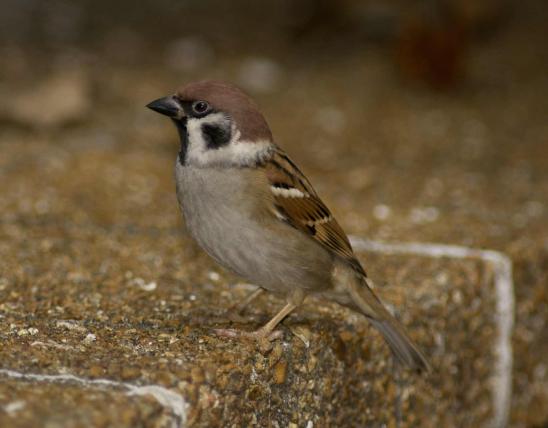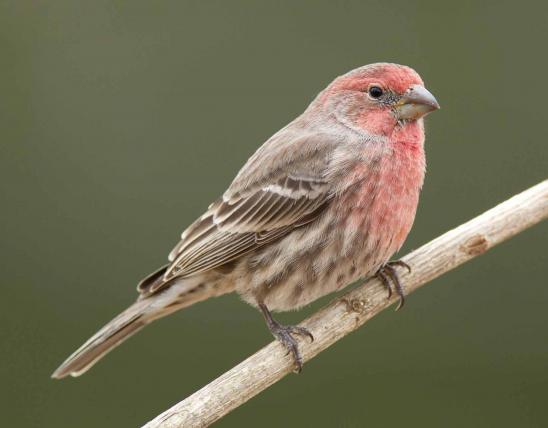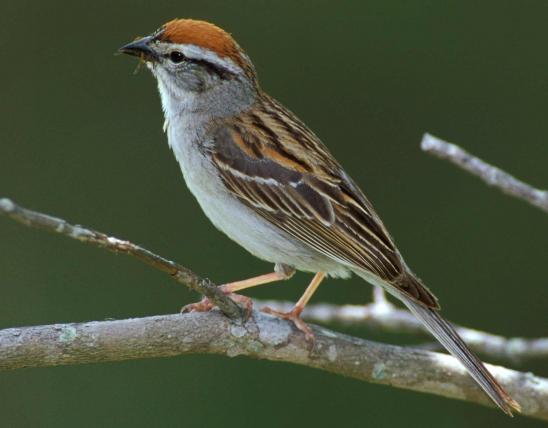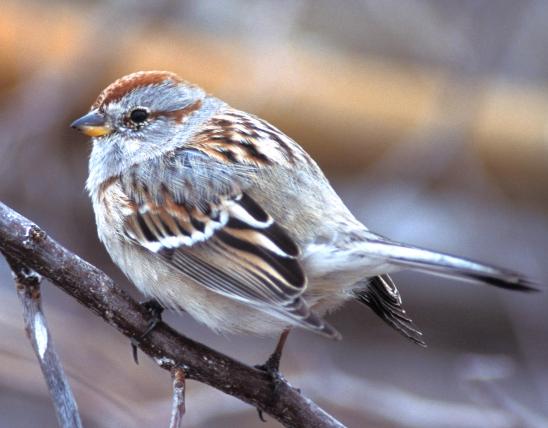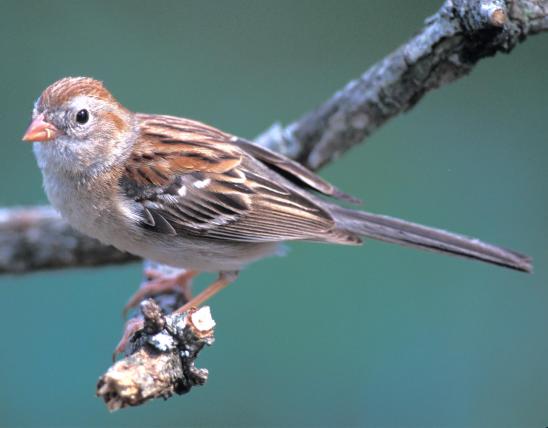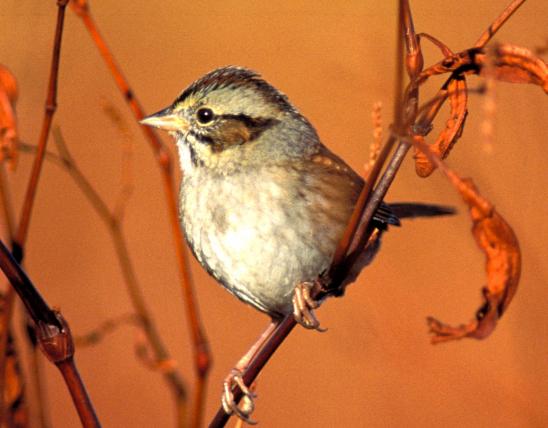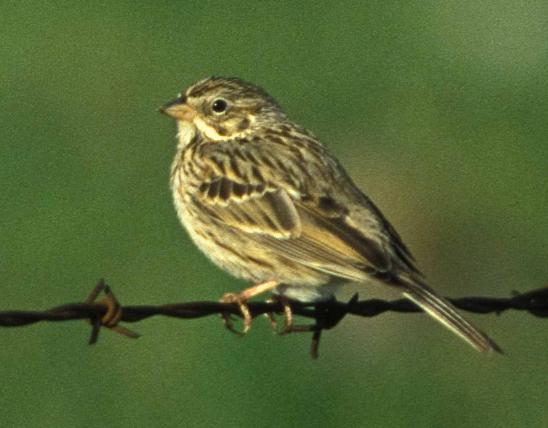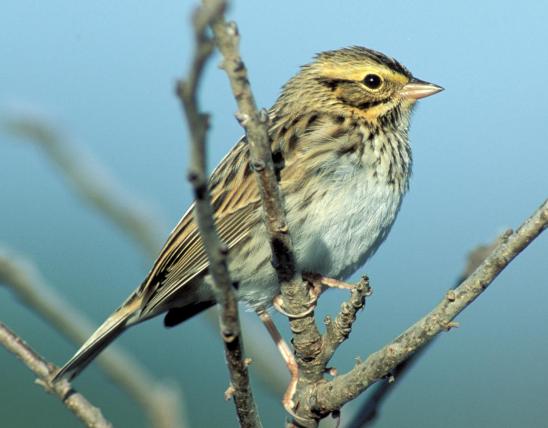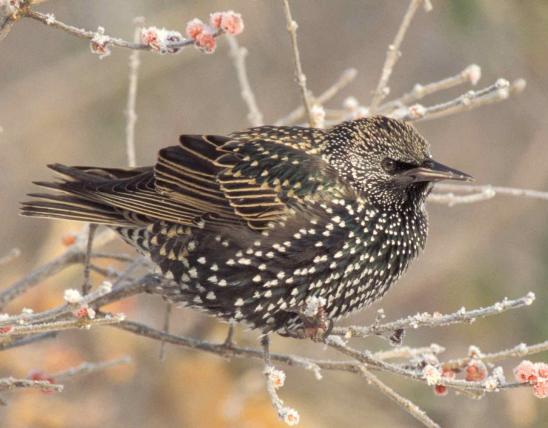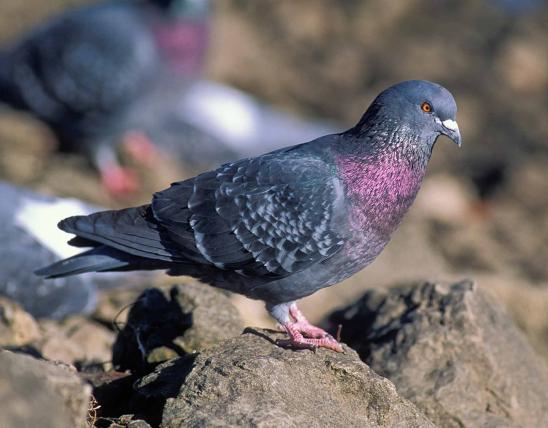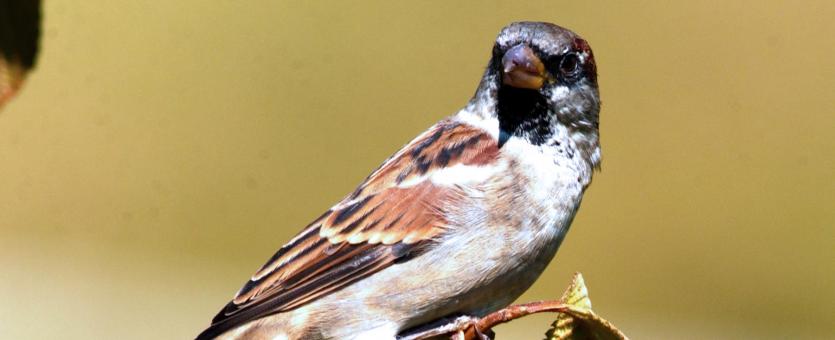
The house sparrow was brought to America from Europe, but instead of controlling insect pests, it became a pest itself. Upper parts of male are chestnut brown with a gray crown, a black eye line and bill, and a whitish gray cheek; a single white wing bar or shoulder spot is often visible. Underparts are grayish tan (dingy), with a black throat and upper breast. Upperparts of female are tan, with darker reddish-brown wings, a yellowish bill, and a pale eyebrow; the single white wing bar or spot is often indistinct, and the underparts are tan. The song is a repeated, slurred, nonmusical chireep or chirip. The call is a harsh chireep.
Similar species:
- Female dickcissels resemble female house sparrows and may go unnoticed at bird feeders in the fall and early winter; they have a white chin bordered on each side by a black line, lack white wingbars, and are usually yellowish on the chest and eyebrow.
- Adult Harris's sparrows, like male house sparrows, have black bibs, but they have pink bills, white bellies, and black on the crown; also, they are usually only seen in Missouri in winter.
- Young white-crowned sparrows can also be confused with female house sparrows, but they have a rusty crown and 2 white wing bars.
- In the St. Louis area, the closely related Eurasian tree sparrow differs with its chestnut cap and bold black spot on the white cheek.
- House finches are similar in name; they are distinguished immediately by their streaked underparts, the male's red breast, and their slimmer, daintier build.
Length: 6¼ inches (tip of bill to tip of tail).
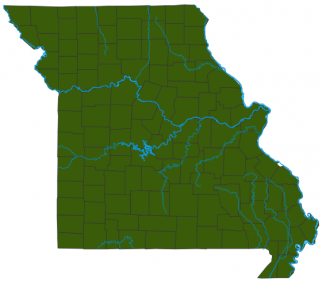
Statewide.
Habitat and Conservation
House sparrows, with rock pigeons and European starlings, are one of the most common birds that share human habitats. Fortunately, they are rarely found in healthy native habitats such as forests, marshes, and prairies. They forage at bird feeders, in fast-food parking lots, and among shrubs and vines near buildings in urban, suburban, and rural areas.
The house sparrow, or English sparrow, is not a true American sparrow; rather, it is an Old World sparrow that is more closely related to species in Europe, Asia, and Africa.
To the initial delight of nostalgic European immigrants, house sparrows were introduced to America in the 1800s in hopes they would help control insect pests. But house sparrows don't feed much on insects, however, and quickly became a pest, especially to farmers.
Food
House sparrows' catholic diet includes grain crop and weed seeds, fruits, insects, bread crumbs, and more. They hang around restaurants' outdoor seating areas and parking lots. They are common at bird feeders and are overabundant in rural regions and around livestock feedlots from coast to coast.
In the past, their numbers were even greater, when considerable food was available in urban areas because of all the grain-fed horses. These sparrows will feed on spilled grain as well as undigested seeds in manure.
Status
Nonnative. Common permanent resident. These introduced birds were greeted first with joy, then with disappointment as they failed to gobble up insect pests. As they multiplied and feasted on grains, they became a frustration. Along with European starlings, house sparrows oust many native birds (bluebirds, purple martins, tree swallows, and woodpeckers, for example) from nesting cavities and nest boxes. Considering their negative impacts on native species, calling them "winged rats" and an "infestation" is not inaccurate.
Life Cycle
House sparrows can have up to 4 broods a year, with up to 8 eggs per clutch. These are incubated for 10–14 days, and the young stay in the nest another 10–14 days. House sparrows are cavity nesters, though fortunately they usually prefer human-made places to natural holes in dead trees. Their untidy nests, made of grasses, twigs, and dried plant matter, feathers, and trash, may be built in crannies of signs in strip malls, in holes in buildings, beneath siding, and in sheltered areas under streetlights. Unfortunately, they often evict bluebirds, martins, and other native species from nest boxes. The oldest wild house sparrow on record lived to be at least 15 years old.
Human Connections
Like other species introduced with good intentions — which have proven to be invasive pests — these "rats with wings" present a cautionary tale about foresight and hindsight. They distress people when they monopolize bird feeders and oust native birds from nest boxes. Where they establish large roosts, their droppings can be a nuisance. On a brighter note, it's hard not to be charmed by these birds' cheery chirps and energetic presence even on cold winter days.
Ecosystem Connections
If you have bluebird boxes, you know how quickly house sparrows can take over the nest space. Amazingly, Missouri's bluebirds, tree swallows, woodpeckers, nuthatches, and others — although clearly impacted by nesting competition by house sparrows — seem to be maintaining healthy populations.
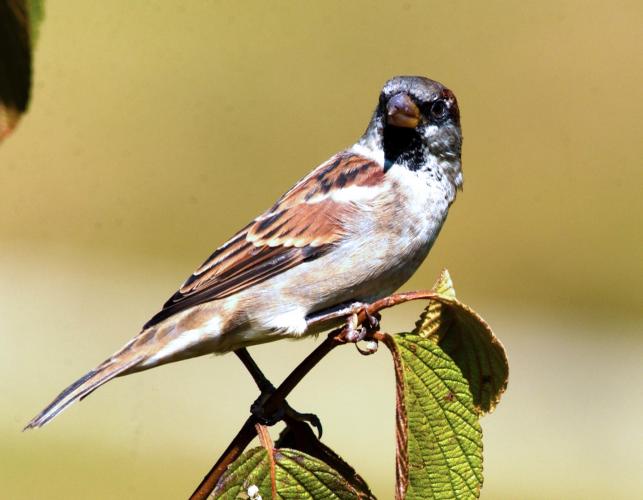
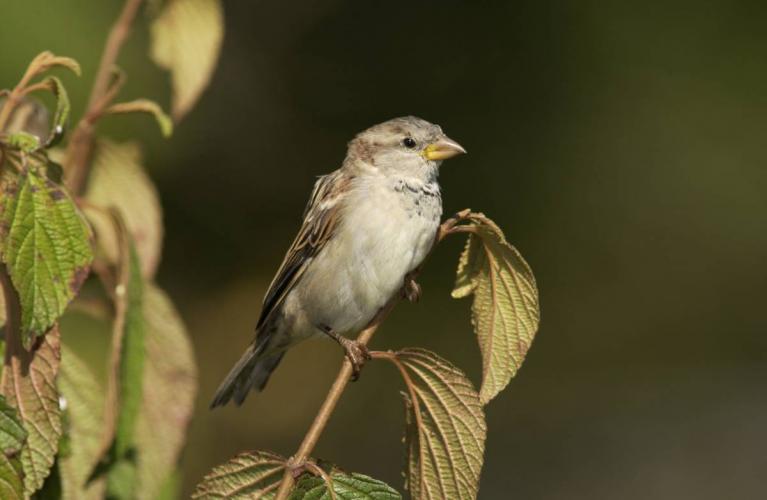
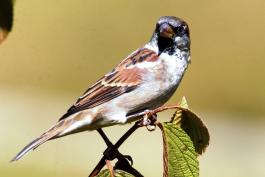
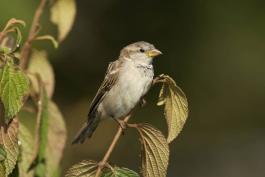

About 350 species of birds are likely to be seen in Missouri, though nearly 400 have been recorded within our borders. Most people know a bird when they see one — it has feathers, wings, and a bill. Birds are warm-blooded, and most species can fly. Many migrate hundreds or thousands of miles. Birds lay hard-shelled eggs (often in a nest), and the parents care for the young. Many communicate with songs and calls.






















